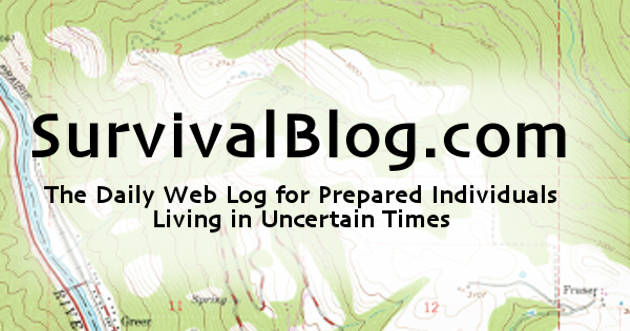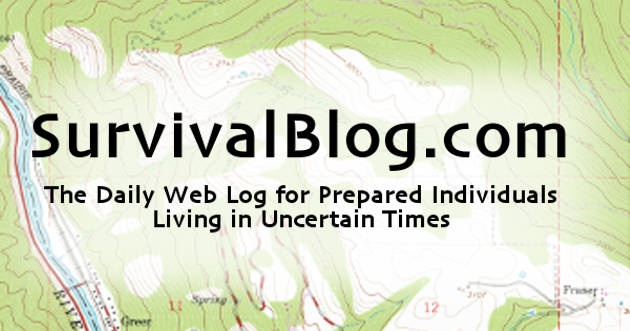Consider Horde Mentality in Your Planning – Part 2, by Ani


(Contined from Part 1. This concludes the article.)
If it were spring or summer, I would also expect many refugees to head to what they perceive of as a good place to pitch a tent and set up “camp” such as farm fields, your “back forty”, the woods behind your house, any stretch of land that appears “unoccupied” etc. I know for sure that many urban/suburban people don’t view rural land as being “owned” in the same way they do their apartments or front lawn/back yard. They also see this as being way more than anyone needs. So why not help themselves to it? They will also figure that you’ve got plenty of apples, pears, berries or whatever it is growing on your land (way more than you could possibly need) an that they therefore can take some. After all, it’s greedy not to share!
Similarly, if you’ve got livestock of any kind that are visible from the road, I wouldn’t put it past people to decide that you’ve got plenty and they need some of what you’ve got. Lots of city people have access to guns and some might not be those who you’d want to have them.
There’s an expression that describes many city/suburban types as those who “would starve to death with a field full of wheat and a fresh cow in the barn”. I recall saying that to someone I knew and he responded by stating that he’d just kill the cow and eat it so he wouldn’t starve! So don’t count on everyone realizing that slaughtering your milk cow is a bad idea!
So other than rural locales close to a city or those located in areas with lots of vacation homes or campgrounds, which other areas might be at risk to the hordes descending on it? As has been written here and elsewhere, many people will just use their apps(if still functional) or maps that will give them directions to where they are heading. Mostly, I’d suspect these will prioritize the main roads, especially the interstate. With this in mind, anyplace that’s on a main road, visible from the interstate or easily reached by an interstate exit would be more at risk. The notion that one wants to be at least 3 turns off of a main road makes sense. If you’re easily visible you’re probably at a higher risk.
I also think that mostly, at least at first, people will try to access places that are easier for them. If gas is in short supply or hard to get, then that’s less than one tank of gas from their home. If they’re on foot or bike, most aren’t in any shape to walk or bike hundreds of miles. If it’s winter, they’re limited by road conditions as well. I don’t want to even think of city people trying to drive with “all season” tires on the back roads or mountains of rural New England! Ditto for mud season! If you’re up on a mountain, you’re not likely to get the foot or bike traffic and maybe not cars either in the winter. If your house isn’t visible from the public oad, then it’s less likely to be noticed. If you’ve got gates which can be secured to prevent access, then many will head to easier pickings.
If a home screams “preparedness” with an easily-visible wind generator, PV panels etc., I do think you will get more people assuming that you’ve got other good stuff, as well. And I wouldn’t want to have my firewood stacked too easily viewed from the road.
Other places that I’d suspect would get an influx of city/suburban refugees would be areas that are well known tourist spots such as ski resort towns, coastal/beach towns, outlet store towns, state park areas, any place on a recreational pond or lake, locales with quaint well photographed picturesque town greens and downtowns and the like; basically, places that city people read about, view pics of on Instagram accounts and travel to on vacation.
Viral Vacationers
Currently we are in the midst of the COVID-19 pandemic. Here in Vermont we are already seeing people fleeing New York City and Westchester County for their second-homes in Vermont. One such person has already been confirmed positive with the virus so we can surely expect that those fleeing New York and other large cities for the perceived safety of Vermont will be bringing the virus here with them.
So what’s left? In truth, that really does account for much of rural New England. I don’t think that if the Schumer Hit The Fan, we are going to be able to avoid at least some of the hordes descending on us at some point in the event. What we can do is consider where we are weakest in terms of vulnerability. If we’re looking for another place to live, we can certainly try as best as possible to take these factors into account. When we work on setting up livestock fields, alt energy, firewood storage, etc. we can likewise look at what we are doing and consider it from the standpoint of some city person coming upon your place and trying to decide if it presents easy pickings or good stuff.
Take Down The Signs
If you normally display a sign by your home that advertises that you sell honey, eggs, veggies, firewood, and so forth, then I think that if a situation arose where we might expect city people to start fleeing for the perceived safety of rural area. So you might want to remove any such signs ASAP. Your friends and neighbors know what you sell. Don’t advertise that to the random hordes.
As for me, while I knew all this and considered it as I house hunted, I still had to factor in other major considerations such as what I could afford which really limited me. Assessing my new place with vulnerability to the hordes in mind, it’s got pluses and minuses. It’s in northern Vermont so that’s a plus as it’s not too close to any large cities and it gets really really cold and snowy! The closest big city is Montreal, Canada which of course is in another country which might well provide some protection. The next closest city less than 300 miles away is Boston. And New York City is more than 300 miles which is a considerable distance (more than a tank of gas!)
My property is on a rural side road although only one turn off of a “main road”, however that “main road” is only a two-lane road so it’s not a major highway. It’s not all that far from the interstate but not terribly close.
It has the negative of being in an area with seasonal vacation homes and a large well loved pond/lake. For the reasons I described above this has the potential to be a problem. Although this means that many homes in the area are vacant maybe half the year, it also means that whomever shows up to occupy them might well not be the owners and not someone with any community ties. As well, many people who don’t live there might show up in hope of finding refuge as previously described. Or, those showing up may bring germs with them from where they fled. Having a large body of water is beneficial(water supply, fishing etc) but also an attractant for those who might decide to hunker down there. As well, it wouldn’t take long for the hordes to “fish out” the lake.
My home is visible from the road but not very close to it. The road is dirt but pretty flat so that won’t keep out people on foot or bikes. Due to the terrain and the woods I will have to build my gardens out front where they will be visible; not a great thing but unavoidable.
So I guess that while we may have an ideal of a home in mind which is best able to withstand the hordes, remote enough to not be found by most of them and thus best suited for a preparedness aware household, reality intrudes and we have to make compromises. I figure that there are pluses and minuses associated with the place I chose and given what I can afford, I did the best I could. Now I need to make this work for me for normal times and also to prepare for whatever may happen down the road.
I suggest that you think about how your home is vulnerable, and what steps can you take to reduce it’s chances of being overrun by the hordes fleeing urban/suburban areas.
